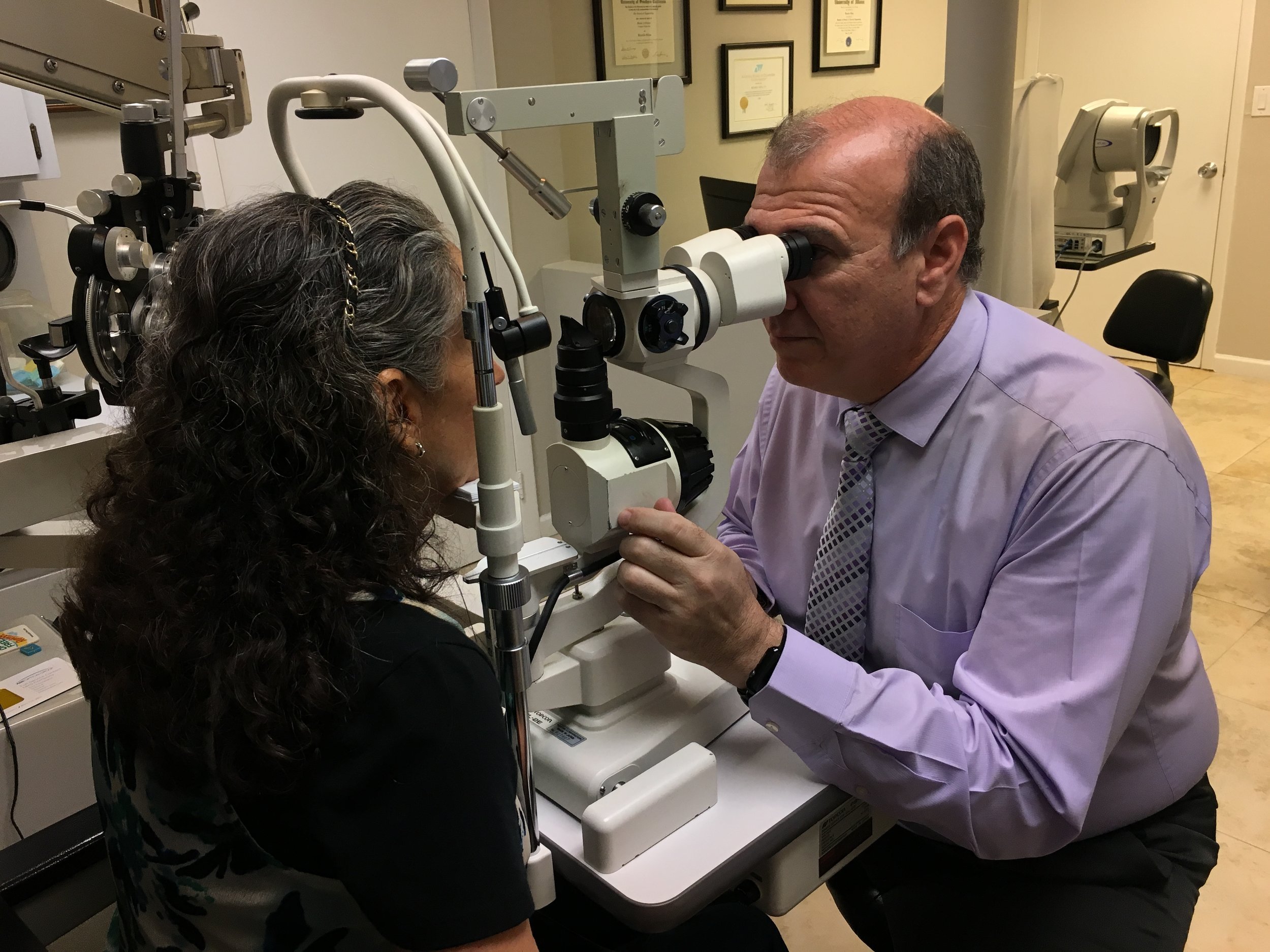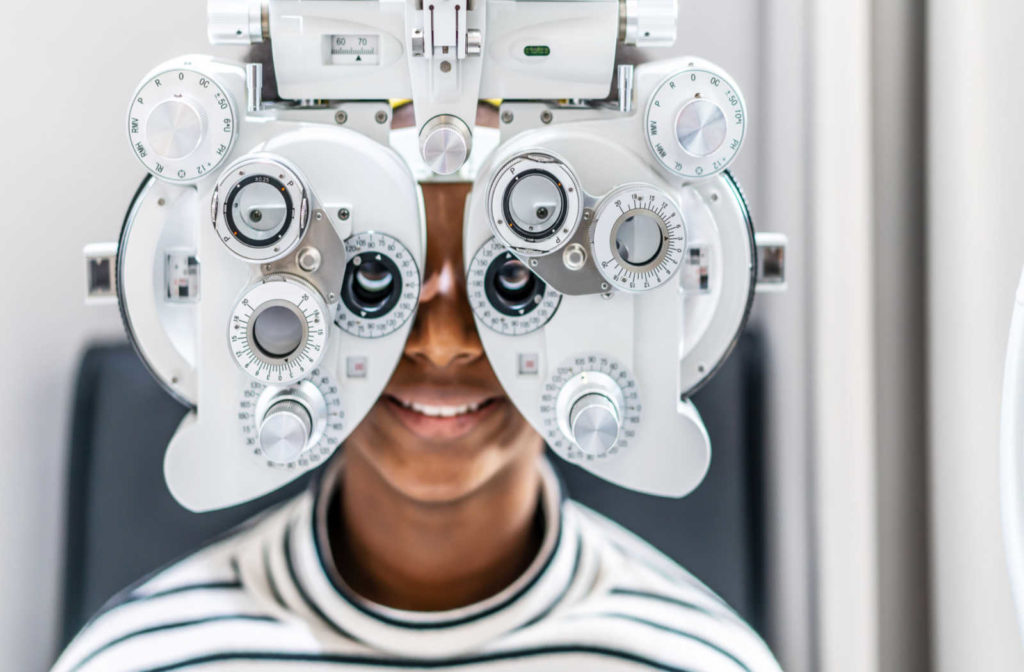Exploring the current Technological Improvements in Optometry and What They Mean for Eye Doctors
From the precision of Optical Coherence Tomography to the nuanced understandings used by AI-driven analysis devices, these innovations are setting brand-new standards in client evaluation and treatment. As these developments penetrate the practice, eye doctors are encountered with the difficulty of accepting these devices to boost individual outcomes.
Innovations in Diagnostic Tools
Progressing the area of optometry, developments in diagnostic devices have changed the way eye treatment experts examine and detect eye conditions and visual problems. The past decade has actually observed considerable technical improvements, making it possible for more accurate and thorough evaluations.
One more trick advancement is the intro of sophisticated corneal topography systems, which map the surface curvature of the cornea with accuracy. These devices are particularly beneficial for fitting get in touch with lenses and diagnosing corneal conditions. Moreover, electronic retinal imaging has actually changed traditional ophthalmoscopy, offering detailed, breathtaking views of the retina that assist in complete aesthetic assessments.
The advancement of wavefront aberrometry has actually also been crucial, enabling the analysis of refractive mistakes with unequaled precision (Eye Doctor). This innovation assists in personalizing restorative lenses and improving surgical outcomes for refractive surgical procedures. Jointly, these diagnostic innovations encourage optometrists to provide premium patient treatment, guaranteeing very early intervention and customized therapy methods, inevitably enhancing visual health and wellness results
AI in Individual Administration
Building on the structure of sophisticated analysis devices, the consolidation of man-made intelligence (AI) in client management stands for a transformative leap for optometry. AI systems are significantly used to boost performance, precision, and personalization in client care. By analyzing vast amounts of data, AI can identify patterns and predict potential ocular problems, enabling eye doctors to customize interventions much more properly. This capacity is essential in handling persistent eye conditions such as glaucoma and diabetic retinopathy, where early discovery and constant tracking are crucial.
Moreover, AI-driven systems assist in structured patient communications and administrative processes. Automated scheduling, online examinations, and customized follow-up strategies not only improve client satisfaction but additionally enhance time management for practitioners. These systems can triage individuals based upon the urgency of their problems, making sure that those in important requirement receive timely attention.
Furthermore, AI improves decision-making by giving eye doctors with evidence-based recommendations and treatment paths. By incorporating information from electronic wellness documents, AI devices use understandings that notify medical choices, lowering the threat of errors and boosting person results. As AI remains to progress, its function in client administration will likely broaden, reshaping the landscape of optometric treatment.
Advances in Retinal Imaging
In the realm of optometry, retinal imaging has actually witnessed exceptional technical advancements that are boosting analysis abilities and person treatment. Technologies such as Optical Comprehensibility Tomography (OCT) and fundus photography have transformed how eye doctors imagine and evaluate the retina. OCT, specifically, supplies high-resolution, cross-sectional pictures of the retina, allowing for the detailed examination of its layers. This ability is vital for very early detection and monitoring of conditions like glaucoma, diabetic person retinopathy, and age-related macular deterioration.
Boosted imaging methods like OCT angiography are further refining analysis accuracy. This non-invasive method maps blood circulation in the retina, offering vital insights right into vascular health without the requirement for dye shots. Additionally, flexible optics innovation is being incorporated into retinal imaging systems to fix ocular aberrations, supplying extraordinary photo quality. Such improvements help with the identification of minute retinal modifications that could symbolize disease development.
Furthermore, developments in expert system are increasing retinal imaging by making it possible for automated evaluation of large datasets. These systems aid eye doctors in determining patterns indicative of pathology, therefore improving analysis accuracy and performance. Collectively, these innovations are changing retinal imaging into a cornerstone of contemporary eye care, improving outcomes and expanding restorative opportunities.
Teleoptometry's Expanding Role
Teleoptometry is progressively becoming a crucial component of eye care, driven by developments in data and diagnostic devices. As optometry embraces electronic improvement, teleoptometry promotes remote examinations, enabling eye doctors to prolong their solutions past conventional boundaries. This is particularly helpful in rural and underserved locations where accessibility to specialized eye treatment is frequently limited. By leveraging high-resolution video clip conferencing and progressed retinal imaging, eye doctors can perform thorough eye exams from afar, ensuring prompt diagnosis and therapy.
The integration of expert system (AI) further enhances teleoptometry, enabling the evaluation of visual data and helping my response in the detection of eye problems such as glaucoma and diabetic retinopathy. AI-powered algorithms can swiftly translate complicated imaging data, providing optometrists with important insights that strengthen medical decision-making.
Moreover, teleoptometry sustains continuity of care through smooth assimilation with electronic wellness records (EHRs), allowing optometrists to preserve detailed patient histories. When consulting with different experts., this ensures that clients obtain tailored and regular treatment also.
In spite of these benefits, difficulties stay, consisting of making certain information security and handling client assumptions. Nevertheless, teleoptometry stands for a considerable stride in the direction of even more obtainable, effective, and patient-centered eye care. As technology evolves, its role is positioned to broaden additionally.

Future Fads in Eye Care
A myriad of ingenious trends is set to reshape the future of eye care, driven by technological innovations and the evolving requirements of patients. One substantial pattern is the integration of expert system (AI) in diagnostics, which promises to enhance the accuracy and performance of eye assessments. AI algorithms can examine substantial amounts of data from retinal photos, possibly finding problems like diabetic retinopathy and glaucoma earlier than conventional methods.
Moreover, tailored medication is acquiring traction in optometry, with hereditary screening informing customized therapy plans. This strategy aims to optimize person results by tailoring interventions to individual genetic accounts. Wearable modern technology, such as smart contact lenses, is additionally coming up, offering real-time monitoring of intraocular pressure or sugar degrees, thus offering continuous understandings into eye and systemic wellness.
The fostering of augmented reality (AR) and virtual fact (VR) in training and client visit here education is an additional emerging trend. These modern technologies offer immersive experiences that can improve understanding and skills both for clients and optometrists. As these fads advance, optometrists have to remain abreast of technological innovations to supply innovative treatment, ensuring better person outcomes and complete satisfaction in the vibrant landscape of eye care.
Conclusion

Jointly, these analysis advancements equip optometrists to provide remarkable client treatment, ensuring early treatment and customized treatment strategies, inevitably improving aesthetic health and wellness results.

As these technologies proceed to advance, optometrists need to adjust and include them into technique, eventually enhancing workflow performance and raising the criterion of eye treatment provided to patients.
Comments on “Recognizing the Function of Your Eye Doctor in Maintaining Vision”